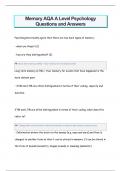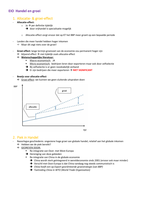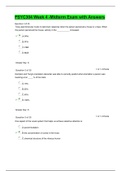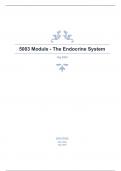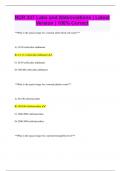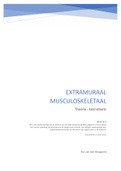Exam (elaborations)
Memory AQA A Level Psychology Questions and Answers
- Module
- Institution
Psychologists broadly agree that there are two main types of memory: - what are these? (2) - how are they distinguished? (3) Short term memory (STM) = Your memory for immediate events Long term memory (LTM) = Your memory for events that have happened in the more distant past • STM and L...
[Show more]
